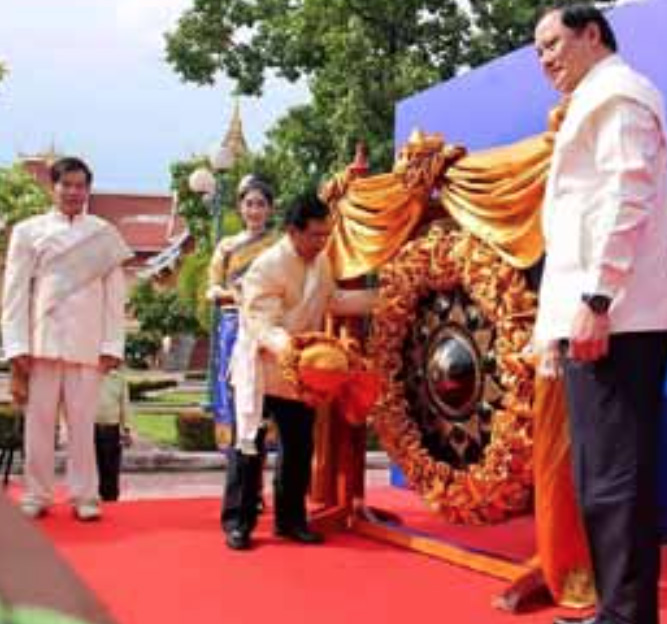Vientiane authorities officially launched the fourth That Luang Stupa restoration project in the capital to return the national icon to its traditional glory in readiness for 450th anniversary celebrations.
The restoration project launch ceremony took place at That Luang Stupa on Sunday and was attended by Vice President Mr. Phankham Viphavanh, Deputy Prime Minister Dr Sonexay Siphandone, and Vientiane Mayor Dr Sinlavong Khoutphaythoune along with monks and novices.
The project will be completed before That Luang festival celebrations on November 14 with the highlight being the use of more than 10 kilograms of donated gold in the stupa’s finial. The restoration is expected to cost about 8-10 billion kip concentrating on improving the main structure, appearance as well as landscaping, electrical system and other items.
Along with the gold Vientiane authorities have collected cash from government sources and private donors including 21,719,500 kip, 2,036,240 Thai baht, US$244 and 500 China Yuan with ongoing efforts to mobilise additional funds. That Luang stupa was originally built during the ancient Khmer civilisation, when Vientiane was inhabited by people known as the Cham. Researchers believe the structure was originally a four-sided stone obelisk.
The site was built as a place for people to worship and pray to idols. The structure was renovated on the orders of King Saysetthathirath in the 16th century when the original site was covered with a bigger stupa. From then on the monument took the name That Luang, or Grand Stupa.
The Cham period saw the second wave of Buddhism in Laos. Under the patronage of Emperor Ashokka of India, the venerable monks Sona and Outala and five scholars brought what believers understand to be pieces of the pelvic bone of Lord Buddha to Vientiane in the Buddhist calendar year 218 (BCE), where they were stored at Phou Luang hill.
The ruler of Vientiane at that time, Lord Chanthabouly Phasitthisack, had a stupa built over the obelisk in 236 BCE. The sacred site was then named Pha Chedi Lokachulamany.
According to the legend of That Phanom Stupa, also known as Tamnan Oulangkhathat, Emperor Ashokka authorised the relics to be placed inside the That Luang stupa in Vientiane.
The same legend claims the remains of Lord Buddha were distributed to all corners of the globe where there were Buddhist followers and his ashes were put inside 84,000 stupas. This number corresponds to the 84,000 points that believers are required to study in the tripitaka (Buddhist scriptures).
Source: Vientiane Times



